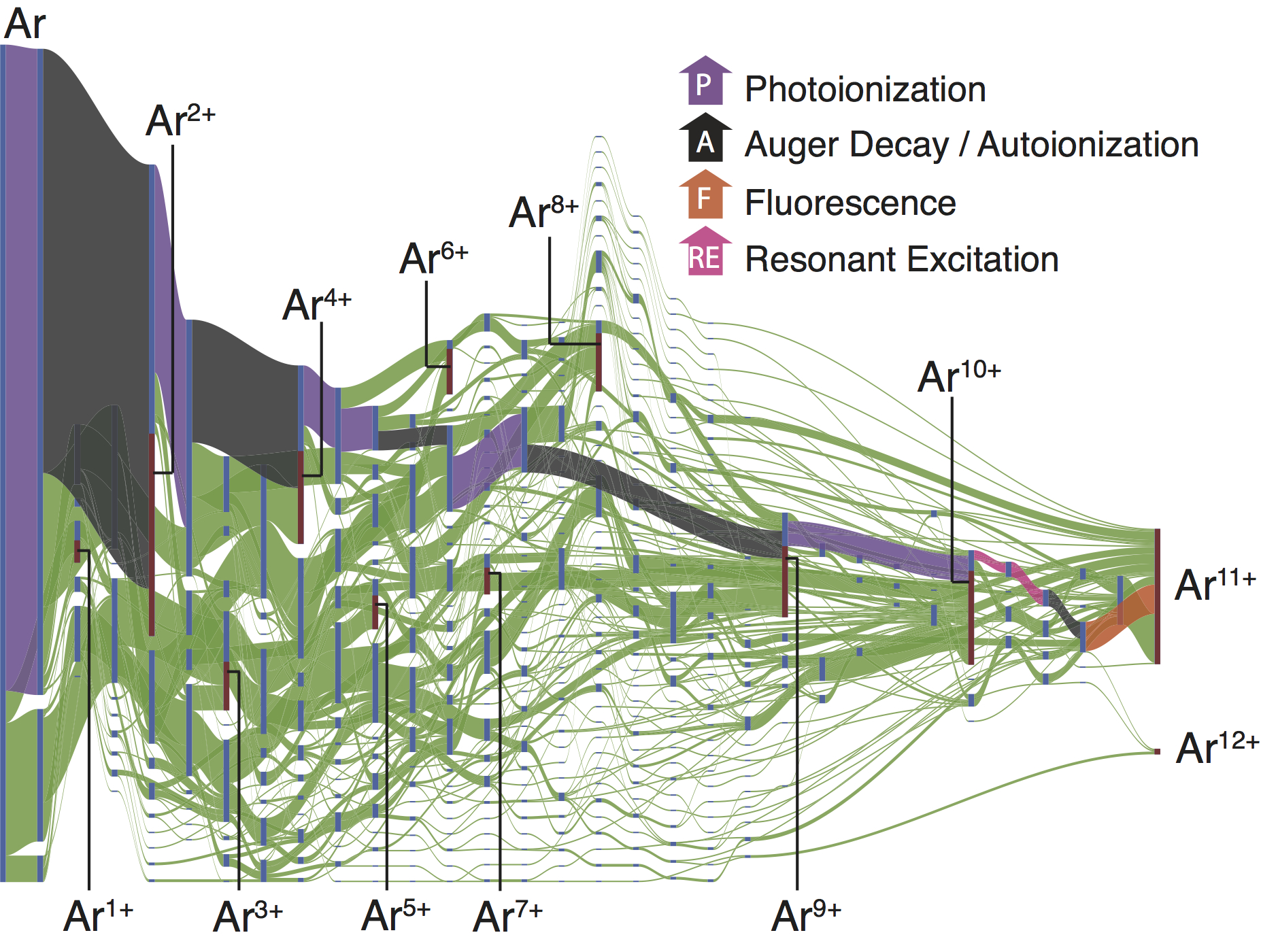| A new Monte-Carlo rate equation computation approach has been developed that allows complete tracking of electron configurations during the course of irradiation by an x-ray free electron laser (XFEL) pulse.Previous simulations accounted only for bound-free transitions and thus were unable to explain the unexpectedly high degree of electron stripping that is sometimes observed.Our new approach systematically includes all possible bound-bound resonances and verified resonance enhancement as the mechanism for ultraefficient ionization.Inclusion of bound-bound resonances is a significant computational challenge as the number of electron configurations grows more than one-billionfold for the 18-electron argon atom. For xenon it increases by 15 orders of magnitude to a staggering 1023 potential configurations.On-demand calculation of atomic properties (atomic wave function and orbital energies, oscillator strength, photoionization cross section, Auger and fluorescence decay rates), in conjunction with a compact database, allows us to solve this daunting challenge.This development allows theoretical exploration of the complex dynamics of resonant high-intensity x-ray processes and is a step toward a complete understanding of diffract-before-destroy methods, due to the massive rearrangement of the electrons that occurs during the course of an XFEL pulse. |
| Distribution & Impact |
|
XRAPM is still under development but will be provided as an open-source program, with distribution expected in 2015. Testing is performed on various platforms.Instructions for installation on Mac OS X, Linux and Windows will be included in the distribution. Our program can provide guidance on the planning and data analysis of future experiments that exploit the properties of the XFEL pulse, as it can predict the complex pulse parameter dependences of the atomic ionization dynamics in an XFEL beam.It is the first program that allows the inclusion of electronic bound-bound transition during the pulse. |
| Funding Source |
|
This work was supported by the U.S. Department of Energy, Office of Science, Basic Energy Sciences, Chemical Sciences, Geosciences, and Biosciences Division. |

